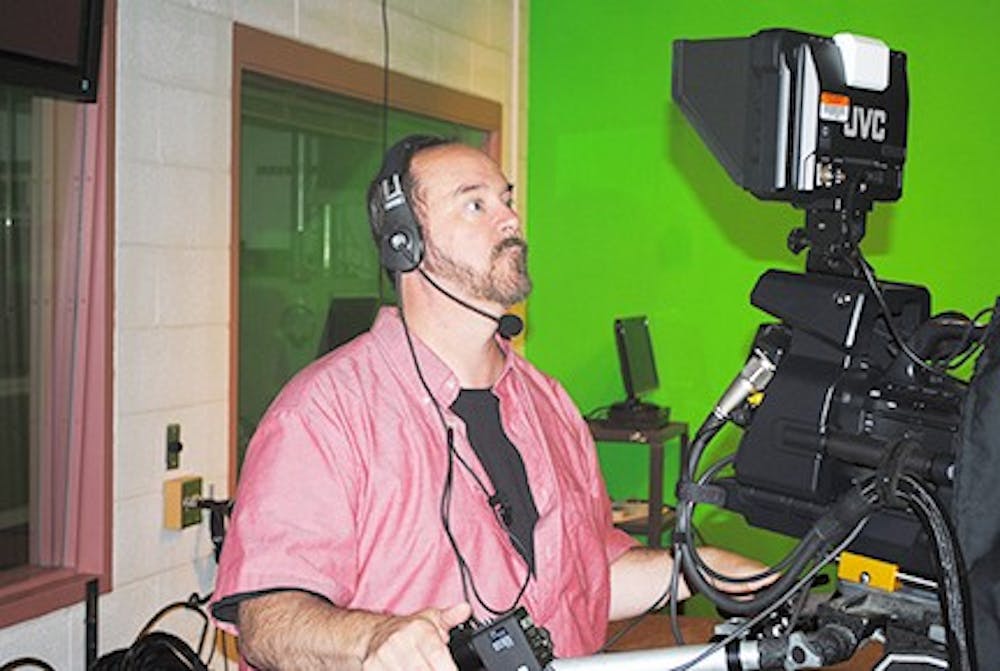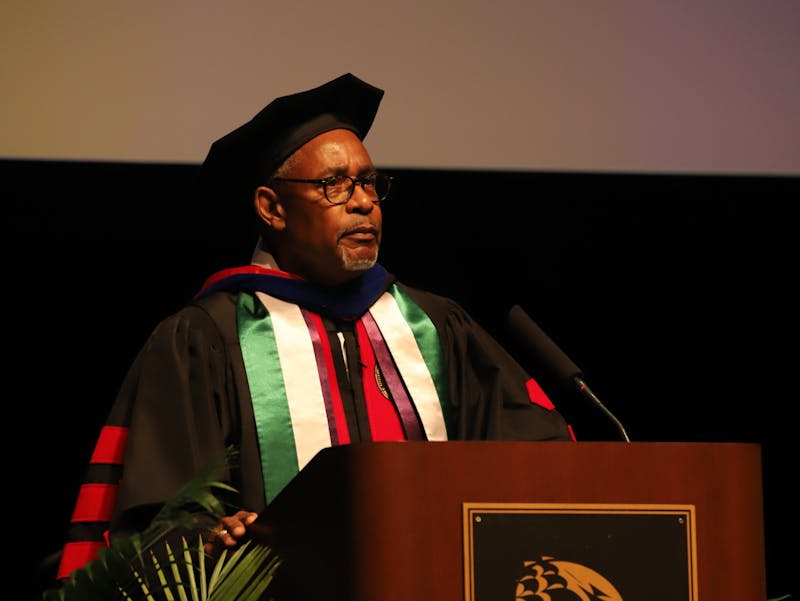It’s 10:55 p.m. on a Thursday night. Many upperclassmen at Shippensburg University use this evening to party at one of the local bars or have other activities planned.
Not all of them.
Crystal Johnson-Tippit asks for last-minute instructions on how to burn her finalized project on a DVD. Everyone else has already left; the computer lab is empty.
Johnson-Tippit used to be enrolled in the nursing program at Harrisburg Area Community College (HACC), but left school to be able to support her newborn son. She is now on track to receive a journalism degree from Shippensburg University in 2015. The mother’s decision to go back to school was not merely based on financial reasons.
“I didn’t want to give my son an excuse not to finish school,” Johnson-Tippit said.
“At first, being back to school and taking classes was awesome,” she said. “But now that I’m in my junior year it is quite challenging.”
She wishes some professors would understand that tasks and assignments that are trivial to a 20-year-old student take longer to complete for someone who has not worked with similar technology for many years.
“Teachers are used to teaching toward traditional students. I feel like expectations are often at the same level.”
Ted Carlin, associate professor at Shippensburg University, said it is always a joy to have nontraditional students in class.
“They are more inquisitive than other students,” he said. “They put a lot of research in the classes they are taking because they don’t want any time wasted. They have a lot of other duties to take care of.”
Carlin added that it is the instructor’s responsibility to recognize and respect all students’ needs, because they can be different.
“Nontraditional students tend to do above average in lecture classes. But it might take them longer to learn and apply new skills in other courses.”
And learning these skills takes time. While time management might be easy for a lot of undergraduates, it can be very challenging for nontraditional students. These students often have to balance school with work, family and financial commitments, which leaves no room for other activities on campus.
Unlike many of the approximately 500 nontraditional students at Shippensburg University, Christopher Ritter is actively involved in student media groups. He is a member of SUTV, Shippensburg University’s student-run TV station and is trying to become more active with the university’s newspaper.
He originally started off his college career at Mansfield University, but discontinued classes after taking over a business that was up for sale during his second year at school.
“I thought, ‘Why study business when I can actually run a business myself?’” Ritter said.
Ritter, whose decision of going back to school came after an extended period of job searching, is now enrolled full time and truly enjoys being back at school.
“I love it. I wish I felt like that when I was just out of high school,” Ritter said. He continued with advice to young students. “Stay in school. You might never get the job in the field you wanted. Having a degree does matter to a lot of employers.”
Shippensburg University is trying to help nontraditional students the best it can. The Nontraditional Student Organization (NTSO) at Shippensburg University offers a dedicated nontraditional student lounge, and is there to support students who are older than traditional freshmen with returning to school or entering the university for the first time.
It can be a strong support system for students who are looking for any type of help, if the student has time.
“Unfortunately, I am not able to take any advantage of the educational and social programs offered by the NTSO,” Johnson-Tippit said. “Time is a luxury, and I don’t have that.”
While Ritter and Johnson-Tippit can easily be recognized as typical nontraditional students, the definition of nontraditional students is not always very clear. The National Center for Education Statistics (NCES) has come up with seven characteristics that identify nontraditional students. Attending college part-time, being a single parent or not immediately continuing education right after high school graduation will put someone in the category of nontraditional.
According to an article in the Wall Street Journal, in the fall of 2011 only 29 percent of undergraduates in the United States were considered “traditional” students — full-time students of standard college age enrolled in four-year public or nonprofit colleges — the rest hit at least one criteria identified by the NCES.
“With the ability of taking summer and online classes, students found other ways to complete their degree,” Carlin added. “And having the economy right now as it is, a lot of people have to work on the side.”
To find out more about the non-traditional-student-organization at Shippensburg University visit: http://www.ship.edu/Dean_of_Students/Nontraditional/Student_Profile..




The Slate welcomes thoughtful discussion on all of our stories, but please keep comments civil and on-topic. Read our full guidelines here.